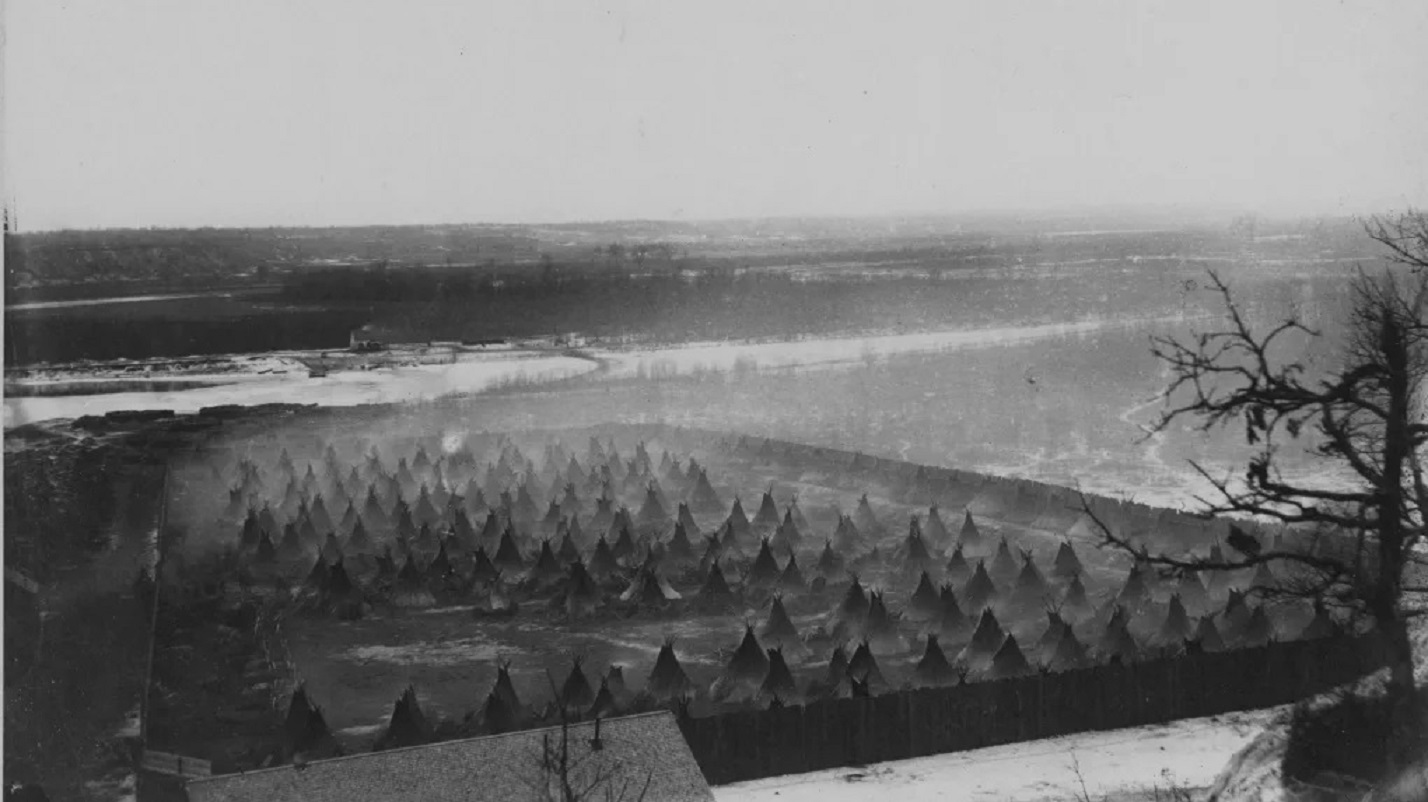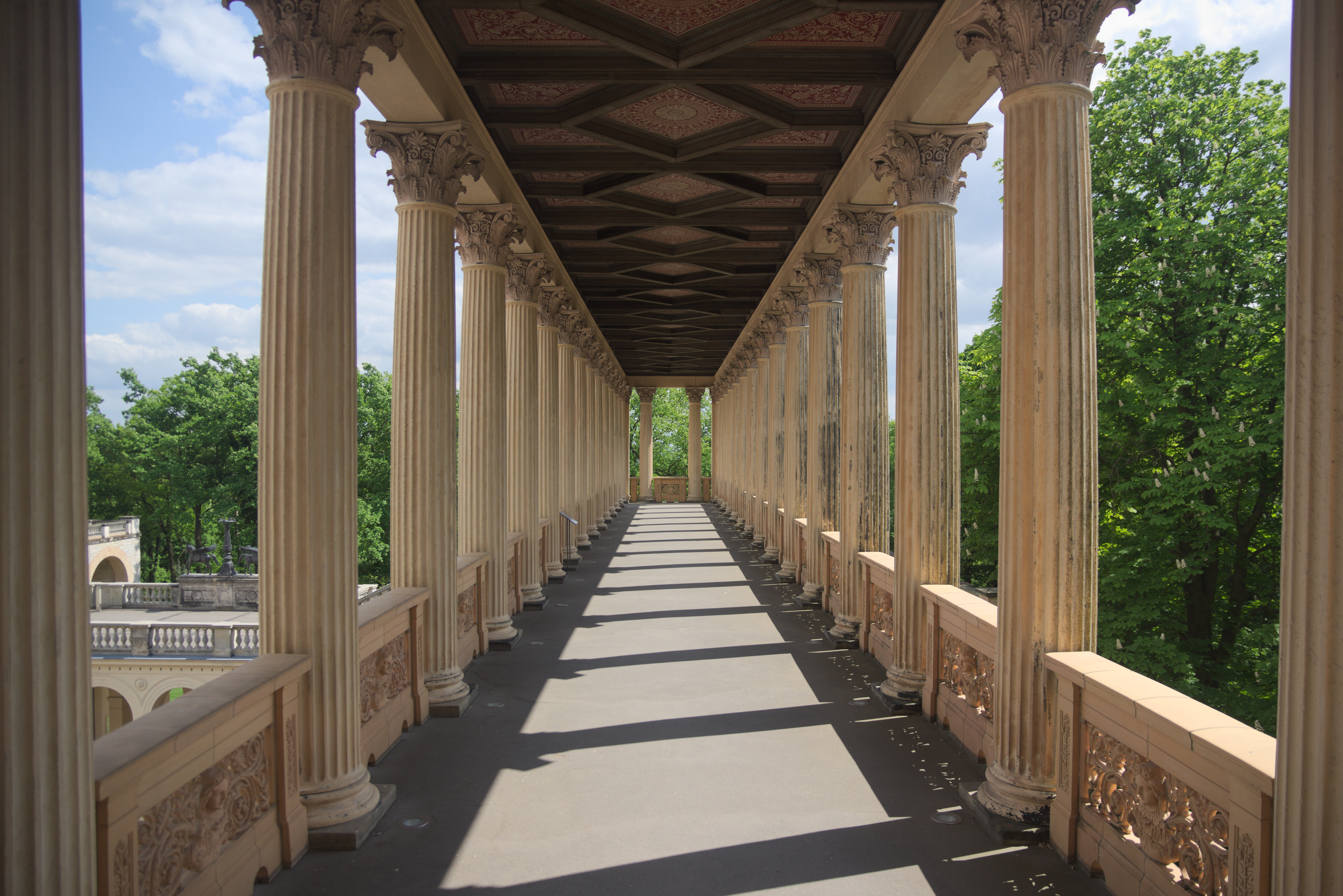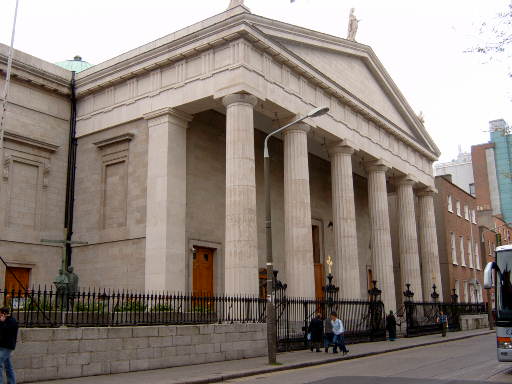|
Basilica Of Saint Mary (Minneapolis)
The Basilica of Saint Mary is a Roman Catholic minor basilica located on its own city block along Hennepin Avenue between 16th and 17th Streets in downtown Minneapolis, Minnesota. It was the first basilica established in the United States. The Basilica of Saint Mary is the co-cathedral of the Roman Catholic Archdiocese of Saint Paul and Minneapolis. The Basilica of Saint Mary has been a landmark of downtown Minneapolis for nearly one hundred years. History The Basilica of Saint Mary replaced a previous church, the Church of the Immaculate Conception. It was originally built in 1871, located at 3rd Street and 3rd Avenue North, but the expanding warehouse district was engulfing the church property. Archbishop John Ireland announced plans for a new Church of the Immaculate Conception on Christmas Day, 1903. In 1905, Lawrence S. Donaldson donated a one-block parcel on Hennepin Avenue near Loring Park for the new church buildings. The design was awarded to Franco-American a ... [...More Info...] [...Related Items...] OR: [Wikipedia] [Google] [Baidu] [Amazon] |
Minneapolis, Minnesota
Minneapolis is a city in Hennepin County, Minnesota, United States, and its county seat. With a population of 429,954 as of the 2020 United States census, 2020 census, it is the state's List of cities in Minnesota, most populous city. Located in the state's center near the eastern border, it occupies both banks of the Upper Mississippi River and adjoins Saint Paul, Minnesota, Saint Paul, the state capital of Minnesota. Minneapolis, Saint Paul, and the surrounding area are collectively known as the Minneapolis–Saint Paul, Twin Cities, a metropolitan area with 3.69 million residents. Minneapolis is built on an artesian aquifer on flat terrain and is known for cold, snowy winters and hot, humid summers. Nicknamed the "City of Lakes", Minneapolis is abundant in water, with list of lakes in Minneapolis, thirteen lakes, wetlands, the Mississippi River, creeks, and waterfalls. The city's public park system is connected by the Grand Rounds National Scenic Byway. Dakota people orig ... [...More Info...] [...Related Items...] OR: [Wikipedia] [Google] [Baidu] [Amazon] |
Cornerstone
A cornerstone (or foundation stone or setting stone) is the first stone set in the construction of a masonry Foundation (engineering), foundation. All other stones will be set in reference to this stone, thus determining the position of the entire Construction, structure. Over time a cornerstone became a ceremony, ceremonial masonry stone, or replica, set in a prominent location on the outside of a building, with an inscription on the stone indicating the construction dates of the building and the names of architect, Construction worker, builder, and other significant individuals. The rite of laying a cornerstone is an important cultural component of eastern architecture and metaphorically in sacred architecture generally. Some cornerstones include time capsules from, or engravings commemorating, the time a particular building was built. History The ceremony typically involved the placing of Sacrifice, offerings of cereal, grain, wine and oil on or under the stone. These were s ... [...More Info...] [...Related Items...] OR: [Wikipedia] [Google] [Baidu] [Amazon] |
Nave
The nave () is the central part of a church, stretching from the (normally western) main entrance or rear wall, to the transepts, or in a church without transepts, to the chancel. When a church contains side aisles, as in a basilica-type building, the strict definition of the term "nave" is restricted to the central aisle. In a broader, more colloquial sense, the nave includes all areas available for the lay worshippers, including the side-aisles and transepts.Cram, Ralph Adams Nave The Catholic Encyclopedia. Vol. 10. New York: Robert Appleton Company, 1911. Accessed 13 July 2018 Either way, the nave is distinct from the area reserved for the choir and clergy. Description The nave extends from the entry—which may have a separate vestibule (the narthex)—to the chancel and may be flanked by lower side-aisles separated from the nave by an arcade. If the aisles are high and of a width comparable to the central nave, the structure is sometimes said to have three nave ... [...More Info...] [...Related Items...] OR: [Wikipedia] [Google] [Baidu] [Amazon] |
Spire
A spire is a tall, slender, pointed structure on top of a roof of a building or tower, especially at the summit of church steeples. A spire may have a square, circular, or polygonal plan, with a roughly conical or pyramidal shape. Spires are typically made of stonework or brickwork, or else of timber structures with metal cladding, ceramic tiling, roof shingles, or slates on the exterior. Since towers supporting spires are usually square, square-plan spires emerge directly from the tower's walls, but octagonal spires are either built above a pyramidal transition section called a '' broach'' at the spire's base, or else free spaces around the tower's summit for decorative elements like pinnacles. The former solution is known as a ''broach spire''. Small or short spires are known as ''spikes'', ''spirelets'', or '' flèches''. Etymology This sense of the word spire is attested in English since the 1590s, ''spir'' having been used in Middle Low German since the 14t ... [...More Info...] [...Related Items...] OR: [Wikipedia] [Google] [Baidu] [Amazon] |
Portico
A portico is a porch leading to the entrance of a building, or extended as a colonnade, with a roof structure over a walkway, supported by columns or enclosed by walls. This idea was widely used in ancient Greece and has influenced many cultures, including most Western cultures. Porticos are sometimes topped with pediments. Palladio was a pioneer of using temple-fronts for secular buildings. In the UK, the temple-front applied to The Vyne, Hampshire, was the first portico applied to an English country house. A pronaos ( or ) is the inner area of the portico of a Greek or Roman temple, situated between the portico's colonnade or walls and the entrance to the '' cella'', or shrine. Roman temples commonly had an open pronaos, usually with only columns and no walls, and the pronaos could be as long as the ''cella''. The word ''pronaos'' () is Greek for "before a temple". In Latin, a pronaos is also referred to as an ''anticum'' or ''prodomus''. The pronaos of a Greek a ... [...More Info...] [...Related Items...] OR: [Wikipedia] [Google] [Baidu] [Amazon] |
Colonnade
In classical architecture, a colonnade is a long sequence of columns joined by their entablature, often free-standing, or part of a building. Paired or multiple pairs of columns are normally employed in a colonnade which can be straight or curved. The space enclosed may be covered or open. In St. Peter's Square in Rome, Bernini's great colonnade encloses a vast open elliptical space. When in front of a building, screening the door (Latin ''porta''), it is called a portico. When enclosing an open court, a peristyle. A portico may be more than one rank of columns deep, as at the Pantheon in Rome or the stoae of Ancient Greece. When the intercolumniation is alternately wide and narrow, a colonnade may be termed "araeosystyle" (Gr. αραιος, "widely spaced", and συστυλος, "with columns set close together"), as in the case of the western porch of St Paul's Cathedral St Paul's Cathedral, formally the Cathedral Church of St Paul the Apostle, is an Anglican c ... [...More Info...] [...Related Items...] OR: [Wikipedia] [Google] [Baidu] [Amazon] |
National Register Of Historic Places
The National Register of Historic Places (NRHP) is the Federal government of the United States, United States federal government's official United States National Register of Historic Places listings, list of sites, buildings, structures, Historic districts in the United States, districts, and objects deemed worthy of Historic preservation, preservation for their historical significance or "great artistic value". The enactment of the National Historic Preservation Act (NHPA) in 1966 established the National Register and the process for adding properties to it. Of the more than one and a half million properties on the National Register, 95,000 are listed individually. The remainder are contributing property, contributing resources within historic district (United States), historic districts. For the most of its history, the National Register has been administered by the National Park Service (NPS), an agency within the United States Department of the Interior. Its goals are to ... [...More Info...] [...Related Items...] OR: [Wikipedia] [Google] [Baidu] [Amazon] |
Ninth National Eucharistic Congress
The Ninth National Eucharistic Congress was a Catholic Eucharistic congress held from June 23 to 26, 1941, at the Minnesota State Fairgrounds in Falcon Heights, Minnesota. The event, meant to foster devotion to the sacrament of the Eucharist, attracted hundreds of thousands of attendees. While primarily at the Eucharistic Center set up at the fairgrounds, other events took place at Saint Paul Union Depot, the Minneapolis Auditorium, the St. Paul Auditorium, the Cathedral of Saint Paul and the Basilica of St. Mary elsewhere in Minnesota. The Archdiocese of Saint Paul, led by Archbishop John Gregory Murray, was the host of the congress. Background The first International Eucharistic Congress owed its inspiration to Bishop Gaston de Ségur, and was held at Lille, France, on June 21, 1881. The initial inspiration behind the idea came from the laywoman Marie-Marthe-Baptistine Tamisier (1834–1910) who spent a decade lobbying clergy after the French Revolution in an effort to ... [...More Info...] [...Related Items...] OR: [Wikipedia] [Google] [Baidu] [Amazon] |
Dennis Joseph Dougherty
Dennis Joseph Dougherty (August 16, 1865 – May 31, 1951) was an American Catholic prelate who served as Archbishop of Philadelphia from 1918 until his death in 1951. He was made a cardinal in 1921. He was Philadelphia's longest-serving archbishop and its first cardinal. Early life and education Dennis Dougherty was born on August 16, 1865, in the Homesville section of Butler Township in Schuylkill County, Pennsylvania. Nicknamed "Dinny" by his parents, he was the sixth of ten children of Patrick and Bridget (née Henry) Dougherty, who were natives of County Mayo, Ireland. The family lived in the Coal Region of Pennsylvania, with Dougherty's father working as a coal miner and Dougherty himself spending his summer vacations as a breaker boy in the mines. As there was no Catholic church or parochial school in Homesville, the family worshiped at St. Joseph's Church in nearby Girardville and Dougherty attended public school there as well. At age 14, Dougherty applied to e ... [...More Info...] [...Related Items...] OR: [Wikipedia] [Google] [Baidu] [Amazon] |
Consecration
Sacred describes something that is dedicated or set apart for the service or worship of a deity; is considered worthy of spiritual respect or devotion; or inspires awe or reverence among believers. The property is often ascribed to objects (a " sacred artifact" that is venerated and blessed), or places (" sacred ground"). French sociologist Émile Durkheim considered the dichotomy between the sacred and the profane to be the central characteristic of religion: "religion is a unified system of beliefs and practices relative to ''sacred things'', that is to say, things set apart and forbidden." Durkheim, Émile. 1915. '' The Elementary Forms of the Religious Life''. London: George Allen & Unwin. . In Durkheim's theory, the sacred represents the interests of the group, especially unity, which are embodied in sacred group symbols, or using team work to help get out of trouble. The profane, on the other hand, involve mundane individual concerns. Etymology The word ''sacred' ... [...More Info...] [...Related Items...] OR: [Wikipedia] [Google] [Baidu] [Amazon] |
Pope Pius XI
Pope Pius XI (; born Ambrogio Damiano Achille Ratti, ; 31 May 1857 – 10 February 1939) was head of the Catholic Church from 6 February 1922 until his death in February 1939. He was also the first sovereign of the Vatican City State upon its creation on 11 February 1929. Pius XI issued numerous encyclicals, including ''Quadragesimo anno'' on the 40th anniversary of Pope Leo XIII's groundbreaking social encyclical ''Rerum novarum'', highlighting the capitalistic greed of international finance, the dangers of Atheism, atheistic socialism/communism, and social justice issues, and ''Quas primas'', establishing the feast of Christ the King in response to anti-clericalism. The encyclical ''Studiorum ducem'', promulgated 29 June 1923, was written on the occasion of the 6th centenary of the canonization of Thomas Aquinas, whose thought is acclaimed as central to Catholic philosophy and theology. The encyclical also singles out the Pontifical University of Saint Thomas Aquina ... [...More Info...] [...Related Items...] OR: [Wikipedia] [Google] [Baidu] [Amazon] |
Pro-Cathedral
A pro-cathedral or procathedral is a parish Church (building), church that temporarily serves as the cathedral or co-cathedral of a diocese, or a church that has the same function in a Catholic missionary jurisdiction (such as an apostolic prefecture or apostolic administration) that is not yet entitled to a proper cathedral. A pro-cathedral is distinct from a ''proto-cathedral'', the term in the Catholic Church for a former cathedral, which typically results from moving an episcopal see to another (usually new) cathedral, in the same or another city. In a broader context, the term "proto-cathedral" may refer to a church used by a bishop before the designation of a settled cathedral (or pro-cathedral). Usage Europe In Ireland, the term is used to specifically refer to St Mary's Pro-Cathedral in Dublin, the seat of the Archbishop of Dublin (Catholic Church), Catholic Archbishop of Dublin since the Anglicanism, Anglican Reformation in Ireland, when Christ Church Cathedral, Dubli ... [...More Info...] [...Related Items...] OR: [Wikipedia] [Google] [Baidu] [Amazon] |







